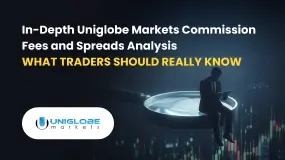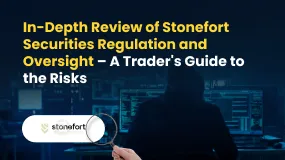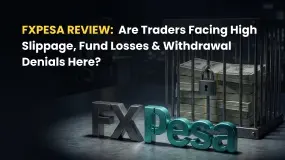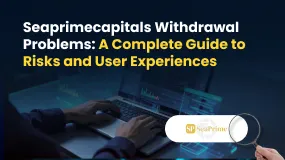简体中文
繁體中文
English
Pусский
日本語
ภาษาไทย
Tiếng Việt
Bahasa Indonesia
Español
हिन्दी
Filippiiniläinen
Français
Deutsch
Português
Türkçe
한국어
العربية
Bitcoin could be laid low by miners malady
Abstract:The cryptocurrencys spectacular rally in 2021 drew thousands of entrants into mining, or producing new coin. As a result the hashrate, or combined computational power used by bitcoin miners globally, has roughly quadrupled over the past six months to blow past 200 million “terahashes” per second.

Bitcoin miners are feeling the heat – and the pains rippling downstream to pressure prices.
But whats that got to do with the price of bitcoin?
A rising hashrate makes it becomes harder for miners to earn coin and cover their costs of hardware, electricity and staff – so many are more likely to sell, rather than hold, their newly minted cryptocurrency, exerting a bearish force on the market.
“Running costs are a major factor in miners‘ decision to hold or sell newly acquired coins. They are the first and most natural sellers in the crypto space and so definitely impact prices,” said Justin d’Anethan, institutional sales director at crypto financial services firm Amber Group.
The total value of coins held in miners wallets has fallen to around $75 billion from $114 billion at the start of November, as their profitability has been squeezed by the rising hashrate as well as falling prices, according to Oslo-based crypto research firm Arcane Research.
Miners have been transferring more coins to exchanges than adding to reserves, according to crypto industry analytics firms, a sign of selling or intent to sell.
Such flows are adding to pressures facing bitcoin, whose drift towards the mainstream has seen it caught up in a selloff in global markets driven by tensions on the Ukraine border and the Federal Reserves policy tightening.
The worlds dominant cryptocurrency is trading at about $37,400, which is 40% below its Nov. 10 high of $62,000.
WHAT IT COSTS
Bitcoin mining, in simple terms, is the process by which a network of computers checks and validates a block of transactions that then get added to the blockchain. Miners get rewarded for completing a block.
It‘s an expensive business, though, requiring not just sophisticated and fast “rigs” costing upwards of $10,000, but also a huge amount of power. And it’s getting pricier.
The seven-day average of total mining cost per transaction validated has fallen to $176.8 from a record $235.57 hit in May last year, data from blockchain.com shows.
“As more miners join the network, each individually earns fewer bitcoin. This is because network difficulty increases in order to slow the issuance of new bitcoin,” said Joe Burnett, analyst at infrastructure and mining firm Blockware Solutions.
Waning mining profitability is also hitting the broader market because some institutional investors, who are unable or unwilling to invest directly in cryptocurrencies, instead buy shares of listed miners or ETFs that track miners as an alternative way of gaining access to the young industry.
Shares of U.S.-listed crypto miners Marathon Digital Holdings and Riot Blockchain have plunged 66% and 52% respectively since early November.
The Valkyrie Bitcoin Miners ETF is meanwhile trading at a roughly 5% discount to its net asset value since the funds launch in early February, and the Viridi Clean Energy Crypto-Mining & Semiconductor ETF has lost 23% since the beginning of the year.
THE LAST BITCOIN
Some of the pressures on miners flow from bitcoins inherent structure. The decentralised blockchain was created anonymously with a final limit of 21 million coins, of which nearly 19 million has already been minted.
It takes around 10 minutes to mine one block and the reward for miners – who currently get 6.25 bitcoin per block – is halved about every four years.
“There could be one miner or a million, it doesn‘t change anything. There’s only one block and a set number of bitcoins issued,” said dAnethan at Amber Group.
A final note: don‘t lose sleep fretting about what will happen when the last bitcoin is mined – that’s not expected until the middle of the next century, 2140 to be exact.

Disclaimer:
The views in this article only represent the author's personal views, and do not constitute investment advice on this platform. This platform does not guarantee the accuracy, completeness and timeliness of the information in the article, and will not be liable for any loss caused by the use of or reliance on the information in the article.
Read more

In-Depth Uniglobe Markets Commission Fees and Spreads Analysis – What Traders Should Really Know
For experienced traders, the cost of execution is a critical factor in broker selection. Low spreads, fair commissions, and transparent pricing can be the difference between a profitable and a losing strategy over the long term. This has led many to scrutinize the offerings of brokers like Uniglobe Markets, which presents a tiered account structure promising competitive conditions. However, a professional evaluation demands more than a surface-level look at marketing claims. It requires a deep, data-driven analysis of the real trading costs, set against the backdrop of the broker's operational integrity and safety. This comprehensive Uniglobe Markets commission fees and spreads analysis will deconstruct the broker's pricing model, examining its account types, typical spreads, commission policies, and potential ancillary costs. Using data primarily sourced from the global broker inquiry platform WikiFX, we will provide a clear-eyed view of the Uniglobe Markets spreads commissions prici

In-Depth Review of Stonefort Securities Regulation and Oversight – A Trader's Guide to the Risks
For experienced traders, the process of selecting a new broker transcends a simple comparison of spreads and leverage. It is a meticulous due diligence exercise where the integrity of the broker's regulatory framework is paramount. Stonefort Securities, a relatively new entrant in the crowded brokerage space, presents a complex and often contradictory profile. On one hand, it boasts a modern MT5 platform and a stream of positive user testimonials. On the other hand, it is shadowed by severe regulatory warnings that question the very foundation of its operations. This in-depth review focuses on the core issue for any long-term trader: Stonefort Securities regulation and oversight. We will dissect the broker's corporate structure, scrutinize its licensing claims, and analyze what the data implies for trader protection and fund security. For traders evaluating whether Stonefort Securities is a trustworthy partner, understanding these details is not just important—it is essential.

FXPesa Review: Are Traders Facing High Slippage, Fund Losses & Withdrawal Denials?
Do FXPesa support officials fail to pick up your calls when you raise fund withdrawal requests with the broker? But are these officials always open to you regarding fund deposits? Do you frequently spot slippage and stop-loss order execution errors on the FXPesa login? These issues are increasingly becoming common with this forex broker. Consequently, many traders have expressed their dissatisfaction with the broker online. In this FXPesa Review article, we have shared some of these complaints. Take a look!

Seaprimecapitals Withdrawal Problems: A Complete Guide to Risks and User Experiences
Worries about Seaprimecapitals withdrawal problems and possible Seaprimecapitals withdrawal delay are important for any trader. Being able to get your money quickly and reliably is the foundation of trust between a trader and their broker. When questions come up about this basic process, it's important to look into what's causing them. This guide will tackle these concerns head-on, giving you a clear, fact-based look at Seaprimecapitals' withdrawal processes, user experiences, and trading conditions. Most importantly, we'll connect these real-world issues to the single most important factor behind them: whether the broker is properly regulated. Understanding this connection is key to figuring out the real risk to your capital and making a smart decision.
WikiFX Broker
Latest News
WikiFX's New Evaluation of ATM Capital LTD: Does its License Protect the Arab Investor?
How a Fake Moomoo Ad Led to the “New Dream Voyage 5” Scam
Is Axi Legit? A Data-Driven Analysis of Its Regulatory Standing and Trader Feedback
Trive Investigation: High Score, Hidden Risk - The Profit Paradox
In-Depth Uniglobe Markets Commission Fees and Spreads Analysis – What Traders Should Really Know
FXPesa Review: Are Traders Facing High Slippage, Fund Losses & Withdrawal Denials?
CMC Markets Australia Revenue Surges 34%, But High-Net-Worth Clients Face Tax Phishing Threat
Bessent believes there won't be a recession in 2026 but says some sectors are challenged
Young Singaporean Trader Grew USD 52 into a USD 107,700 Portfolio
Is GGCC Legit? A Data-Driven Analysis for Experienced Traders
Currency Calculator



